Search
Search Results
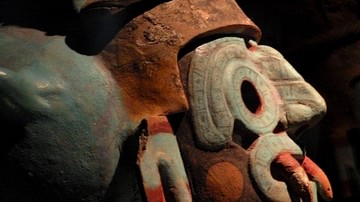
Definition
Tlaloc
Tláloc (pron. Tla-loc) is one of the most important and formidable gods in the Aztec pantheon. He was considered the god of rain, water, lightning and agriculture. Tlaloc was seen as both a benevolent god providing life-giving rain but also...
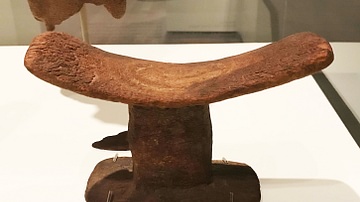
Image
Tellem or Dogon Headrest from Mali
This headrest was made either by the Tellem culture (named for the Tellem caves in which they are found) that lived in the Bandiagara cliffs of Mali from the 11th-15th century CE, or from the area's current inhabitants, the Dogon peoples...
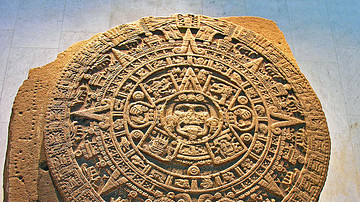
Definition
Sun Stone
The Aztec Sun Stone (or Calendar Stone) depicts the five consecutive worlds of the sun from Aztec mythology. The stone is not, therefore, in any sense a functioning calendar, but rather it is an elaborately carved solar disk, which for the...
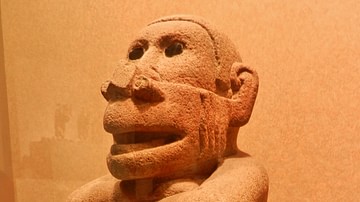
Definition
Ehecatl
Ehecatl was a Mesoamerican god of air and winds, especially those which brought rains. Regarded as a manifestation of the great feathered serpent god Quetzalcoatl, he was sometimes known as Quetzalcoatl-Ehecatl, in which guise he helped create...
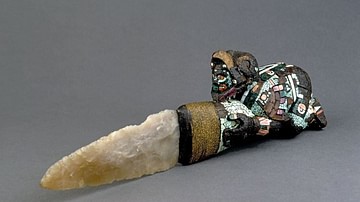
Article
Aztec Ceremonial Knife
The Aztec mosaic-handled knife currently in the British Museum, London dates to between 1400 and 1521 CE and is thought to have been used in religious ceremonies. Made from wood and flint the knife handle represents an Aztec warrior but...
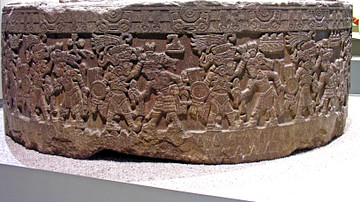
Article
The Tizoc Stone
The Tizoc Stone is a huge stone cylinder from the Aztec capital of Tenochtitlan which depicts a sun-disk on its flat upper surface and carries a frieze around its outer edge showing Aztec warriors and the Aztec king Tizoc, whose reign from...
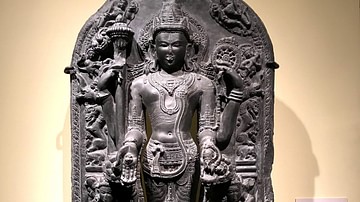
Image
Vishnu with Lakshmi and Saravati
The Hindu god Vishnu, the "preserver of the universe," is flanked by two female figures. His sister Sarasvati, the patron goddess of knowledge and the arts, stands to his proper left, playing a stringed instrument called a vina that is her...
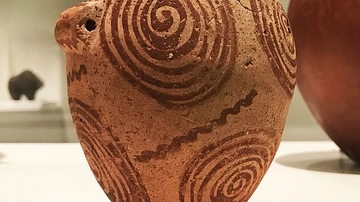
Image
Predynastic Period Vessel from Egypt
This Predynastic Period vessel from ancient Egypt is made of terracotta. It was made c. 4500-3100 BCE. From the late Predynastic Period onward, the Egyptians used painted, incised, and polished pottery in life and as burial accessories for...
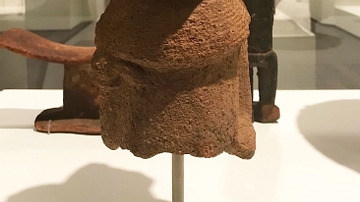
Image
Nok Culture Fragment of a Figure
As a result of erosion and mining, one of the oldest and most sophistcated art-producing cultures known in sub-Saharan Africa came to light in the mid-20th century. Hundreds of hollow figures, heads, and fragments made of coarse clay have...
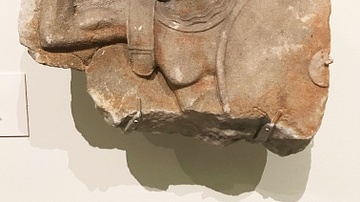
Image
Relief of a Greek Warrior
This relief of a Greek warrior dates from 600-50 BCE. It is made from marble. (Iris & B. Gerald Cantor Center for Visual Arts at Stanford University, Stanford, California)